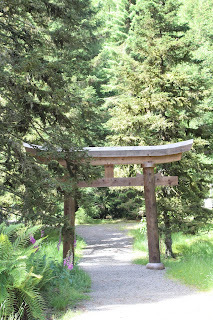Jeff—Saturday
For some time now I’ve had a theory about why Mykonos is so
overbuilt, yet continues to expand, amid a financial crisis that’s crippled
growth virtually everywhere else in Greece. The answer seemed simple to me:
It’s the financial crisis itself, stupid.
Here’s how I came to that conclusion.
The global financial crisis began in 2008, and Greece was
one of its first casualties. It’s been
officially in bailout mode from 2010 until ending this summer. I shall not
repeat the horrific debt, poverty, and unemployment figures Greece has borne,
for I prefer to think positively.
However, one must keep that Great Depression mentality in
mind to fully appreciate the amount of capital that’s been plowed into Mykonos
in those bailout years. I mean CAPITAL.
Mega-villa construction outstripping traditional-size homes, sun-bathing
beaches becoming expanded beach club sites, beach club sites adding luxury
malls, and traditional tradesmen shops disappearing, replaced by hawkers of
jewelry, sunglasses, and fashion of the moment, or bars and more clubs.
But most of all, more and more homes sprouted up. Virtually
all for the same reason: to earn rents. All across Greece the word went out, if
you want to make money, come to Mykonos, and many did hoping to find fiscal salvation
there. The more who came, the faster
prices rose for accommodations and rents.
Many Greeks and others with homes on the island realized they could make
more money renting out their places during the three-month tourist season than
they would likely make annually at their year-round jobs. The rational decision
was to build, and build they have.
This bizarre cycle continues. The more suspect the Greek
economy, the more building and investment comes to Mykonos. Even Lindsay
Lohan has gotten in on the act…if in name only.
Where it all leads is anyone’s guess, but with regulated
hotels now forced to compete with unregulated renters, tax authorities left to
sort out who’s paid what to whom, and wage-earning workers forced off the island
because they can’t find reasonably priced places to live, it’s not hard to see all
ending in tears.
As I said, all of that was conjecture on my part. A theory
I’d tossed about.
Then, today, I read a review by William Gallagher, appearing
in Greece’s newspaper of record Ekathimeri,
of a one-man play, “Rent Control” (featuring Evan Zes). His play came to Athens
from Off Broadway. The article is titled “To
Be or AirBnB?” Its opening paragraph
stopped me cold. Here it is.
In other words, what I saw afflicting Mykonos is
not confined there, but has spread to Athens, and I assume other pricey places
like Santorini. Some might cite that as a sign of economic recovery, but is it
that, or merely a way for entrepreneurial-minded Greeks to survive until true
recovery arrives?
Who knows? I
certainly don’t. Though perhaps the
government will get an indication of how their electorate feels on the subject when
parliamentary elections take place sometime before October 20, 2019.
—Jeff












































































